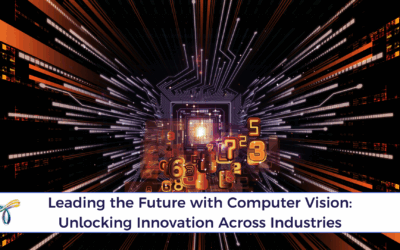Privileged Access Management implementation supports all types of organisations in rapidly reducing high-impact risks and stopping access to highly sensitive data to hackers. Privileged accounts play a critical role in building and protecting an organisation’s security infrastructure. By managing and monitoring privileged accounts and access, PAM enables organizations to give secure privileged access to vital assets and comply with regulatory obligations.
The cybersecurity techniques and technologies known as “privileged access management” (PAM) are used to exercise control over elevated (“privileged”) access and permissions for users, accounts, processes, and systems throughout an IT environment. PAM assists organizations in reducing their organization’s attack surface and preventing, or at the very least mitigating, the damage caused by outside attacks as well as insider carelessness or misconduct.
How Privileged Access Management Works
Before going forward to finding PAM best practices, let’s understand what the top privileged accounts are that organisations look for on priority.
1. Domain Admin Accounts
These are the accounts that are “head of the family” accounts. Domain admin accounts have full access, control, and regulation of Active Directory domains. Therefore, these accounts should be in the hands of limited trusted individuals, and thus they get priority on privileged access to a high degree.
2. Local Administrator Accounts
Local Admin Accounts are one of those familiar accounts that get created when you install Windows on the system. These accounts are harmless in themselves. This is because they have only access to altering local system controls or creating another new local admin for the system.
But as the companies grow, tracking these small accounts becomes a tough job. This is where hackers find their way to enter and do serious harm.
3. Application Accounts
Application accounts are connected to the applications themselves. What are the potential uses for these privileges in applications? They can do batch tasks and keep running scripts, allow access to other apps, and access various databases. These accounts are subject to serious threats because the passwords associated with them are typically stored in unencrypted plain text files.
Here are some vital PAM best practices that organizations should adhere to to deploy a privileged access management strategy successfully.
1. Implement the Principle of least privilege
The principle of least privilege states that a user should only get access to certain data and resources that are needed to complete a task at a specific time. It has been recognized as the best strategy in security and is a crucial step in safeguarding privileged access to highly valuable information and assets.
Beyond human access, the least privilege applies to applications, systems, and linked devices that require rights or permissions to carry out a necessary operation and can all use the concept. Least privilege enforcement makes sure the machine tool only has the minimal access required. Adaptive controls that can achieve a balance between security and compliance requirements.
2. Address and Prioritize risks
Analyzing your business goals and identity infrastructure is a vital step while implementing PAM best practices. It helps you find the types of risks associated with business roles and functions and prioritize them.
You can try responding to three crucial questions before beginning an assessment of the risk to IT security:
3. Role of privileged access management in Zero Trust
The idea, which is currently rising in popularity, is based on the maxim “never trust, always verify” and does away with the practice of putting faith in network connections, devices, and users. Zero Trust is merely a business process needing the least privileged access possible. To certain organizations, this may appear to be a radical transformation. Organizations can more easily apply the Zero Trust principles throughout their infrastructures with the help of PAM tools.
Granular access controls to restrict user rights and close monitoring of privileged user activity are just two advantages that privileged access management systems give, along with Zero Trust networks.
4. Assigning privilege as per segmented accounts and duties
Corresponding to how privileges and responsibilities are divided according to relevance and importance, segmenting systems and networks fundamentally involves separating them. Based on privilege settings and trust levels, systems and networks are divided. The top levels are generally used for privileged accounts, while the lower levels are used for unprivileged ones; as a result, the upper levels are more secure than the lower ones.
It is possible to utilize separation or segregation of jobs and privileges to stop personnel from violating security. This also guarantees log integrity for incident investigations. It becomes simpler to stop any possible breach from expanding outside of its segment the more networks and systems are segmented.
5. Create, audit and review privileged policies and logs periodically
Protocols for Privileged Access Management should be periodically reviewed to make sure they are functioning as intended. Aside from determining whether existing Privileged Access Management systems are optimized to best assist users, organizations can utilize this review time to determine whether additional program functions ought to be added. Your Privileged Access Management program should be capable of expanding and adapting as businesses do.
The protection of privileged accounts should include session monitoring, recording, and auditing. This means users are aware that their actions are being watched. As a result, employees and other IT users are more likely to follow security standards and act appropriately. Organizations can obtain security metrics by auditing privileged accounts that give executives and CISOs the right information to make wise business decisions.
6. Cultivate a culture of security awareness
Security awareness is foremost when discussing employee education. All employees must be conscious of and understand their important role in safeguarding data and vital resources of a company. This will reduce the likelihood that they may click on a malicious link, divulge personal information to a third party, or download a suspect file that would execute a ransomware payload. Regular role-based training for your workforce, including both technical and non-technical personnel, is one way to ensure their safety.
Why Privileged Access Management Matters
Considering that privileged user accounts have enhanced permissions, access to sensitive data, and the power to modify settings, they are important targets for attack. The operational activities of any organization could suffer severe harm if compromised. Thus, a good Privileged Access Management strategy in place safeguards overall harm to data and crucial assets.
We at DigiTaiken aim to take your security journey to the next level by implementing the best Privileged Access Management practices. The process starts with analysing your current security structure and creating a secure identity roadmap which matches your business goals and security compliances.





